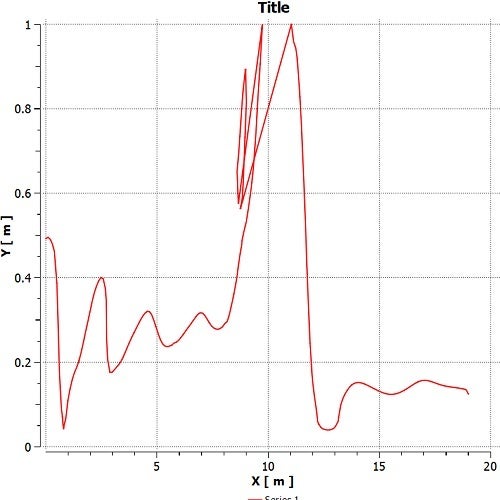-
-
August 9, 2021 at 9:30 am
PoojaH
SubscriberAugust 9, 2021 at 10:14 amRob
Forum ModeratorStaff are not permitted to open or download attachments.
Assuming you're plotting VOF = 0.5 surface and the height on that it'll tell you the free surface height. You'll need to work out which are the incoming and refracted waves.
August 9, 2021 at 11:14 amAugust 9, 2021 at 2:40 pmRob
Forum ModeratorI'd look at the contour plot and look at height and velocity in adjacent plots: hopefully the reflected wave is moving away from the sea wall. I'd also look into why you have the odd loop in the plot at around x=9.
August 9, 2021 at 3:27 pmPoojaH
SubscriberIn the graph we have plotted for length (x) and height (y) ,is it incorrect?? Should we create a contour plot for velocity and length ?? and the odd loop is because of boundary conditions ??How can we resolve it??
How to get proper wave elevations?
August 11, 2021 at 4:35 pmRob
Forum ModeratorHave a search for "depth" in the Fluids section on here, I've answered the water depth question before. Nothing wrong with plotting positon and height, but you also need to find which direction waves are moving. Images (and movies) are very useful to see what's going on.
Viewing 5 reply threads- The topic ‘Hello, I am studying wave structure interaction on a breakwater to know the reflected waveheight’ is closed to new replies.
Innovation SpaceTrending discussionsTop Contributors-
4607
-
1510
-
1386
-
1209
-
1021
Top Rated Tags© 2025 Copyright ANSYS, Inc. All rights reserved.
Ansys does not support the usage of unauthorized Ansys software. Please visit www.ansys.com to obtain an official distribution.
-
The Ansys Learning Forum is a public forum. You are prohibited from providing (i) information that is confidential to You, your employer, or any third party, (ii) Personal Data or individually identifiable health information, (iii) any information that is U.S. Government Classified, Controlled Unclassified Information, International Traffic in Arms Regulators (ITAR) or Export Administration Regulators (EAR) controlled or otherwise have been determined by the United States Government or by a foreign government to require protection against unauthorized disclosure for reasons of national security, or (iv) topics or information restricted by the People's Republic of China data protection and privacy laws.












